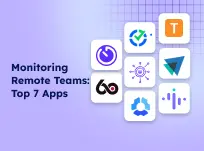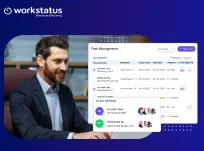Table of Contents
Introduction
Monitoring workplace productivity is basically any business’s core responsibility, as it is instrumental in ensuring that the objectives and deadlines are set on time.
Meanwhile, tracking the productivity of employees can be hard to do correctly.
Did You Know?
Over 60% of employees reported that extensive work monitoring decreased productivity and job satisfaction.
Excessive attention to workers’ productivity may create a distrustful work environment and lower levels of spirit.
In the case of this challenge, the golden mean is to learn how to check productivity levels in a way that is simultaneously beneficial for employers and employees.
What Is Employee Productivity Monitoring?
Monitoring employee productivity refers to tracking and measuring employees’ efficiency and effectiveness in completing their:
- Assigned Tasks
- Meeting Job-Related Goals
- Completing Objectives
This can be done through various methods, such as:
- Tracking Time Spent On Different Tasks
- Measuring Output
- Evaluating Performance Metrics
The purpose of monitoring employee productivity is to:
- Increase Employee Efficiency
- Reduce Costs
- Improve The Quality Of Work
Now let’s take a look at some.
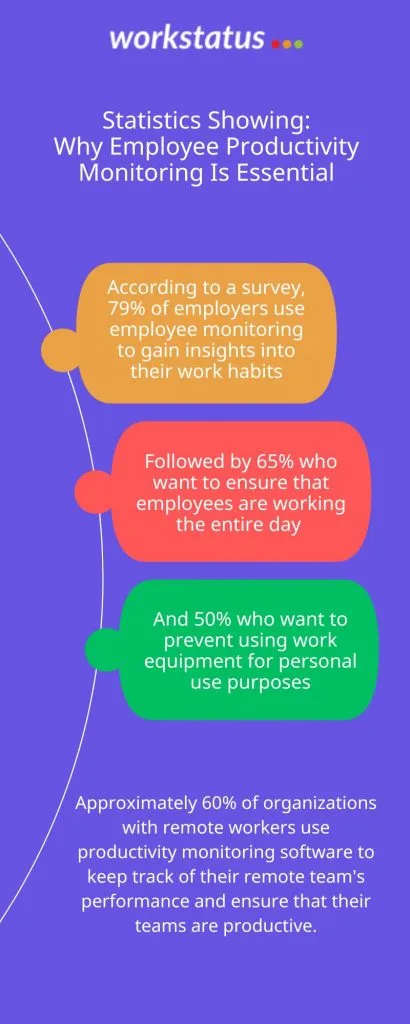
Employee Productivity Monitoring: How It Has Evolved
Over the years, employers have adapted and evolved their methods for tracking employee performance and productivity.
Here are the different stages of monitoring employee performance
1) Early Stage:
In the early days, employee productivity was measured through manual methods such as:
- Time Cards
- Daily Logs
- Paper-Based Performance Evaluations
These methods were time-consuming and error-prone and often relied on self-reporting.
2) Biometric Monitoring:
In the last decade, biometric monitoring has become more popular, with companies using tools such as:
- Keystroke Monitoring
- Facial Recognition
- GPS Tracking
To monitor employee productivity.
This allows for a more objective measurement of employee performance and is less dependent on self-reporting.
3) Automation:
With the advent of artificial intelligence, manual methods of employee productivity monitoring are replaced by automated systems such as:
- Employee Productivity Monitoring Software
- Workforce Management Software
- Project Management Tools
These tools include:
- Productivity Tracking
- Time-Tracking
- Attendance And Location Tracking
- Real-Time Reports
Allowing managers to monitor employee productivity with minimal effort.
These automation systems have made it easier for companies to monitor employee productivity and provide more accurate and reliable data.
Different Methods Of Measuring & Calculating Productivity Of Employees
| Method | Description |
| Output per employee | Measures the amount of output produced by an employee on a per-person basis. |
| Output per hour | Measures the amount of output produced by an employee per hour of work |
| Multi-factor productivity | Takes into account multiple factors such as:
Labor, Capital, Technology To measure overall productivity. |
| Cycle Time | Measures the time it takes for a specific task or process to be completed from start to finish. |
| Quality metrics | Measures the quality of the output produced by an employee.. |
| Customer satisfaction | Measures the level of satisfaction of customers who have been assisted by employees. |
| Goal setting and tracking | Setting specific productivity goals for employees and tracking their progress towards achieving those goals. |
Challenges With Solutions Faced By Employers To Monitor Employees’ Productivity
Challenge 1-
One main challenge employers face in monitoring employee productivity is maintaining employee trust.
Employees may feel that they are being micromanaged or that their privacy is being invaded if their every move is being monitored, which can lead to a decrease in trust and loyalty.
Solution 1-
In such a situation, employee productivity tracking software can solve this challenge by balancing monitoring productivity and respecting employee privacy.
This software is designed to track employee productivity from different metrics, such as:
- Total Activity/per day
- Total Worked Time
- Total Projects Worked
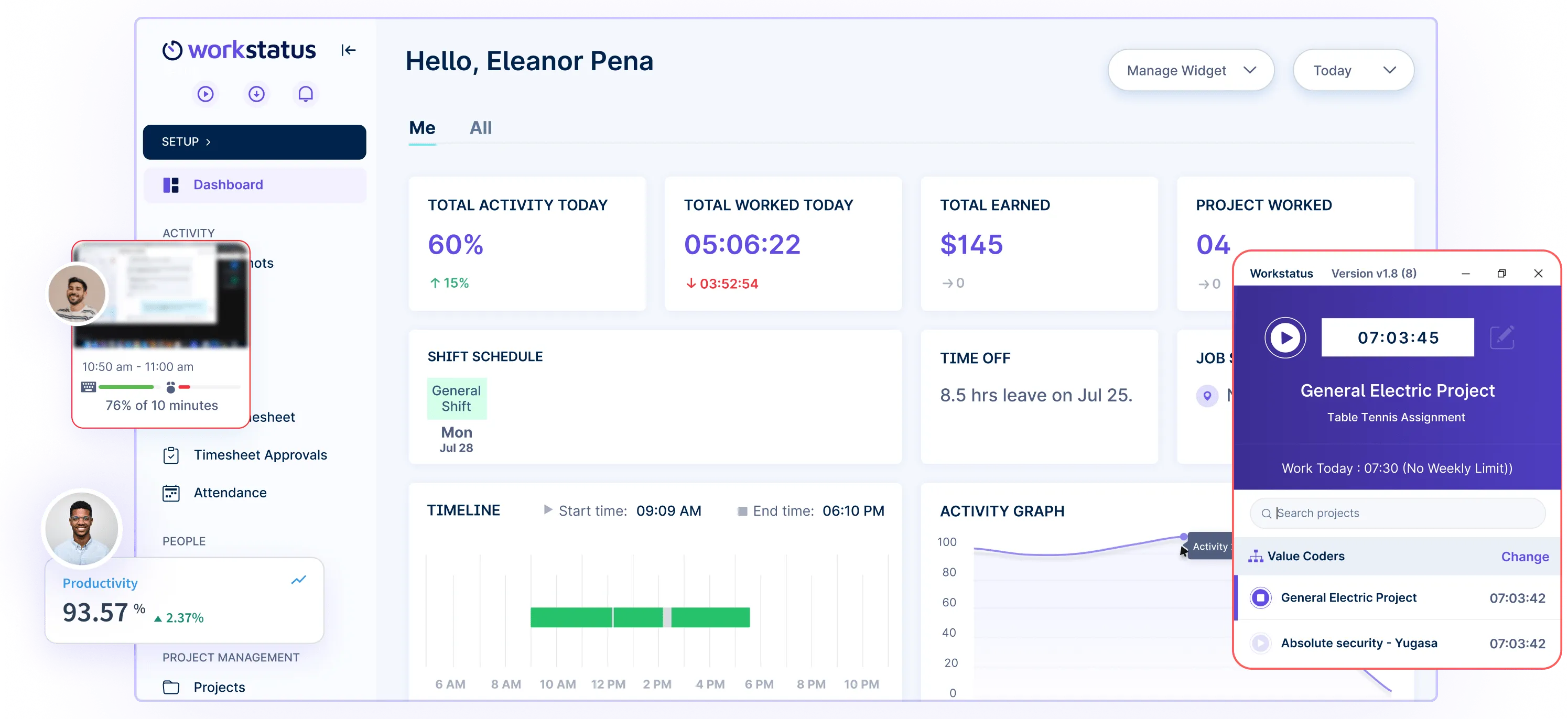
These metrics allow employers to keep track of employee productivity from a single dashboard without invading their employees’ privacy.
Challenge 2-
Another challenge employers face is ensuring that employees work efficiently and effectively without wasting time on non-work-related activities or distractions.
Solution 2-
Employers should consider using software to monitor employee activities:
- Websites Visited
- Apps Used
During work hours.
![]()
This can help them identify any non-work-related activities that employees may be engaging in during work hours.
Challenge 3: Another challenge that employers face is how to collect and analyze the data from employee productivity tracking software.
Solution 3: Here, daily and real-time reports can be used to ensure accurate data collection, and to run a quick analysis. Employers can access various reports, such as:
- Time & Activity Reports
- Weekly Reports
- App and URL Reports
- Timesheets Reports
- Attendance Reports
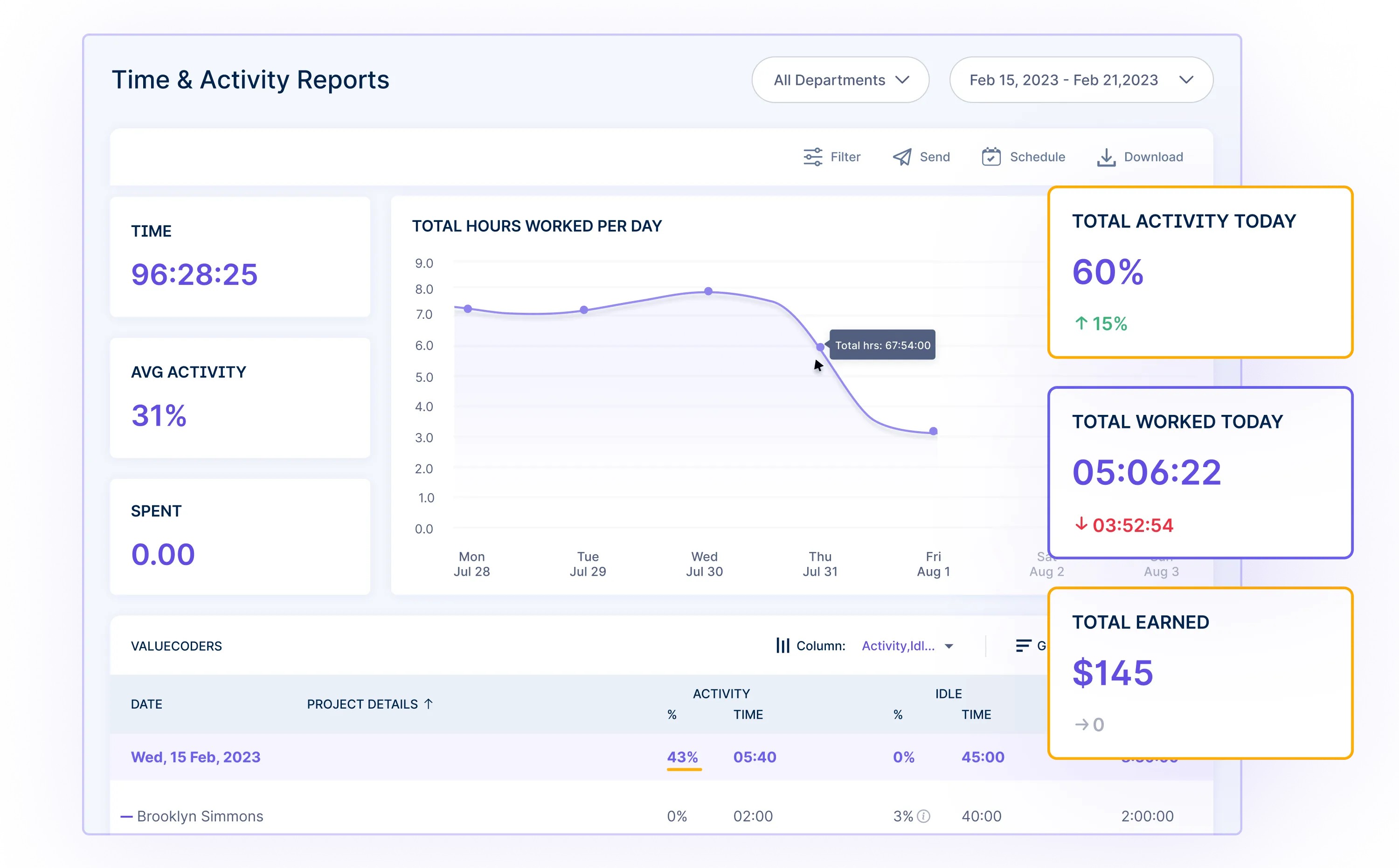
Challenge 4- Despite using productivity monitoring software to track employee productivity silently, some software keeps on sending notifications to the employee system
such as:
- Screenshot Captured
- User Activated
- Task Completed
These notifications keep distracting the employee and create a sense of insecurity, leading to a lack of trust and commitment.
Solution 4-
A productivity monitoring system with the Stealth Mode can help address this challenge.
If Stealth Mode is enabled, the productivity monitoring program runs in the background without notifying or alerting employees.
This helps workers be distraction-free and not feel like they are being monitored constantly.
Similarly, employers can convey the purpose of this software and how their employees should use it. This, in turn, will not only improve productivity and efficiency but also help build trust and create a positive work environment.
Now that we have discussed the challenges and solutions concerning employee productivity monitoring, the question remains: which tool could be used for employee monitoring?
Closing Thoughts
In the end, tracking employee productivity could be a tough balancing act between evaluating performance, protecting privacy, and respecting employees’ autonomy.
The key is to use an effective approach to monitoring employee productivity without damaging the employees’ trust.
Get started by trying Workstatus, the complete solution for employee productivity monitoring. It helps you better understand this area.
Never look back! Sign up today to experience our real-time employee monitoring without effort.
FAQs
Ques: What role does productivity monitoring software play in contributing to the employee’s productivity?
Ans: Employees can use real-time productivity meetings software to provide instant feedback about their productivity and identify areas where they can improve. Besides, it may indicate to the employers where their administrative process should be improved to heighten productivity.
Ques: Would monitoring productivity cause employees to feel stressed and under surveillance?
Ans. To maintain trust and productivity, prioritize assistance over spying. Provide clear objectives and feedback, empower employees to select their own metrics, and emphasize productivity as a measure of progress. This promotes empowerment and minimizes stress.
Ques: Is it legal to monitor the productivity of employees?
Ans: Of course, as long as you follow local labor regulations and notify employees of the monitoring procedure, most nations allow employee productivity to be monitored.



